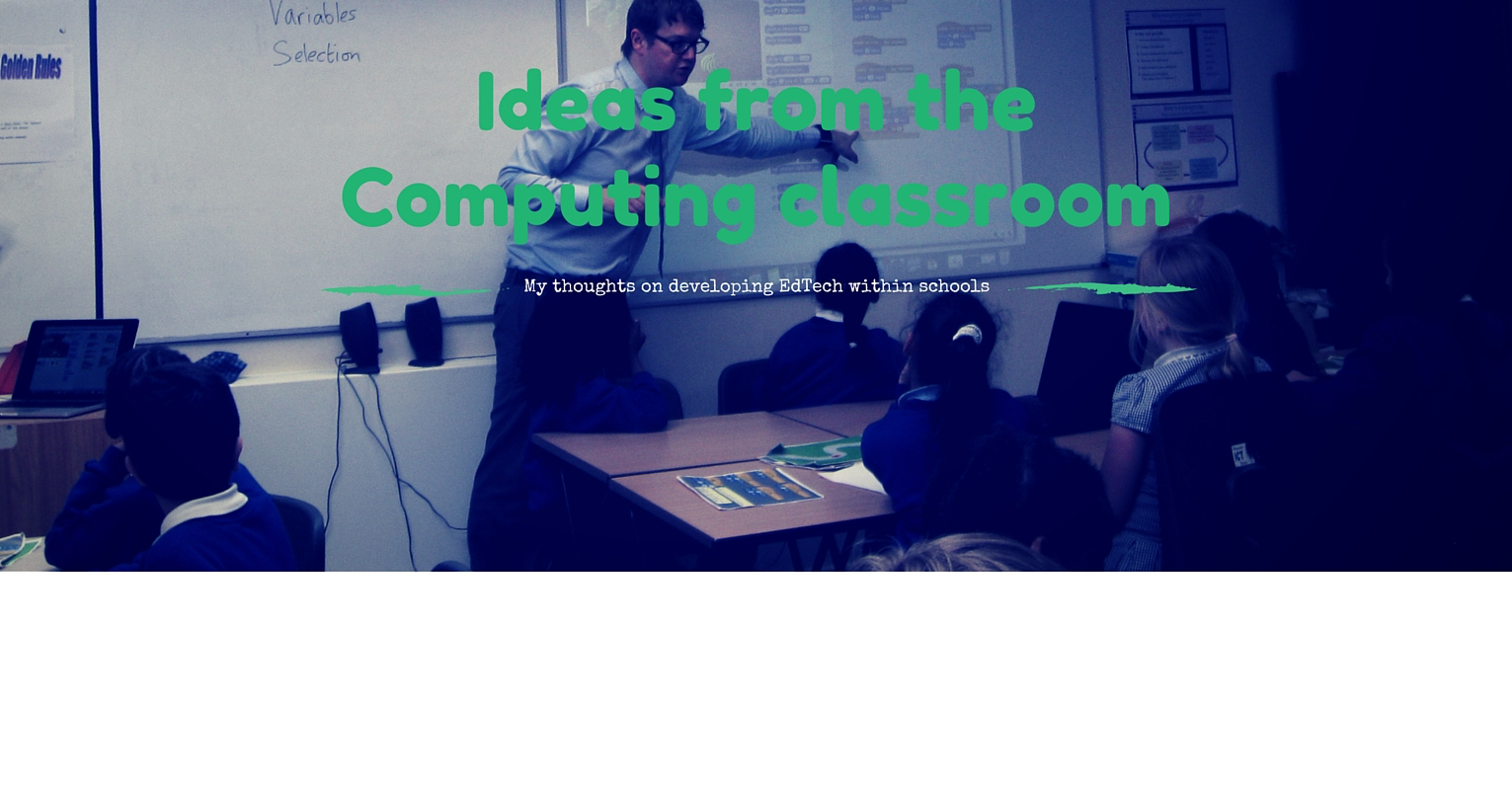Developing 'Computational Thinking' in EYFS
 |
‘Computational Thinking’ can be thought of as the art of using computers to solve problems. This doesn't mean getting pupils to think like computers, but rather encouraging them to think in ways that will then enable them to use computers to solve problems.
Computational thinking includes concepts such as;
- Decomposition (breaking problems down into smaller sub parts).
- Pattern recognition (recognising patterns that help to identify and solve specific problems).
- Pattern generalisation and abstraction (putting these patterns in their simplest terms so they can be used whenever needed).
- Algorithm design (writing the steps that can be used to solve problems).
Computational Thinking in the new Computing curriculum
 |
| image: http://www.switchedoncomputing.co.uk/ |
The Computer Science aspect of the new curriculum states that pupils in Key Stage 1 should…
- Understand what algorithms are; how they are implemented as programs on digital devices; and that programs execute by following precise and unambiguous instructions.
- Create and debug simple programs.
- Use logical reasoning to predict the behaviour of simple programs.
Later on, in Key Stage 2 pupils should…
- Design, write and debug programs that accomplish specific goals, including controlling or simulating physical systems; solve problems by decomposing them into smaller parts.
- Use sequence, selection, and repetition in programs; work with variables and various forms of input and output.
- Use logical reasoning to explain how some simple algorithms work and to detect and correct errors in algorithms and programs.
But how can pupils start to develop their 'computational thinking' skills from an early age? One effective way of doing this is through the use of 'unplugged' activities, whereby key Computer Science elements are taught through the use of games, puzzles and other various non - tech based activities. Phil Bagge has tons of these on his excellent website www.code-it.co.uk
I also believe young pupils need to have plenty of opportunities to actually use and engage with technology as well though. Many schools have invested in iPads and many practitioners such as the excellent Lee Parkinson (ICT MrP) have proven time and again, that if used effectively (i.e. to serve a real educational purpose), then this can really impact significantly on teaching and learning.
I have blogged myself about some of the ways that I have used iPads within my teaching of Computing in EYFS but this has tended to focus more on pupils using the technology rather than to specifically develop 'computational thinking' skills.
Recently, however I stumbled across a way of using the iPad to develop these key computational thinking skills as well. I have always enjoyed using the excellent app Green Screen by Doink and thought I would combine this with the app I Can Animate, in order to enable pupils to create their own realistic stop motion animations. Unwittingly, I soon came to realise that pupils were starting to cover some of these key Computer Science elements as well. The well - developed computational language they were using, for example was particularly evident. As I was teaching the project I realised that;
Obviously, these outcomes can be achieved using devices such as BeeBots and through the aforementioned unplugged type activities as well. However, by giving pupils learning a real purpose, they were able to keep engaged throughout the duration of the project. Pupils were also covering a range of early learning development outcomes too. They loved the kinaesthetic element and the overall experience of making their own animation - they were truly amazed by the finished result!
- Pupils were 'writing' their own programmes (i.e. they were working out how to get different characters to certain places within the scene).
- Pupils were giving precise and unambiguous instructions (e.g. "move that character 2 steps forward")
- Pupils were executing precise and unambiguous instructions (for their animation to be successful they had to move their characters to the correct places within their scene).
Obviously, these outcomes can be achieved using devices such as BeeBots and through the aforementioned unplugged type activities as well. However, by giving pupils learning a real purpose, they were able to keep engaged throughout the duration of the project. Pupils were also covering a range of early learning development outcomes too. They loved the kinaesthetic element and the overall experience of making their own animation - they were truly amazed by the finished result!
Are you a teacher of EYFS? Why not give this unit a go for yourself! Click on the link below and try it out. If you do use this free resource please do let me know what you think.
This unit will form one of six overall units, that will make up 'EYFS Project Live'. This version of my Computing scheme of work will be available to subscribe to from next year. The Project Live Computing scheme of work (KS1 and KS2) is already proving to be extremely popular with schools.
For more information visit:
http://www.jecomputing.co.uk/project-live.html
* Main image taken from http://www.bu.edu/hic/2012/05/24/computational-thinking/






1 comments
A great example of an educational item that makes learning enjoyable and engaging for young children is the Frank Educational Early Learning Small Alphabet Kit. For me, as a parent, the most important thing is finding toys that help my kid grow and learn, and this set meets that need. For little hands, these vibrant alphabet pieces are the right size, and the games and activities that go along with them are great for practicing letter identification and phonics. It's a great approach to teaching my kid the basics of reading and writing while also encouraging his or her imagination and curiosity. Anyone seeking stimulating Educational Toys for children has my enthusiastic recommendation of this set.
ReplyDelete